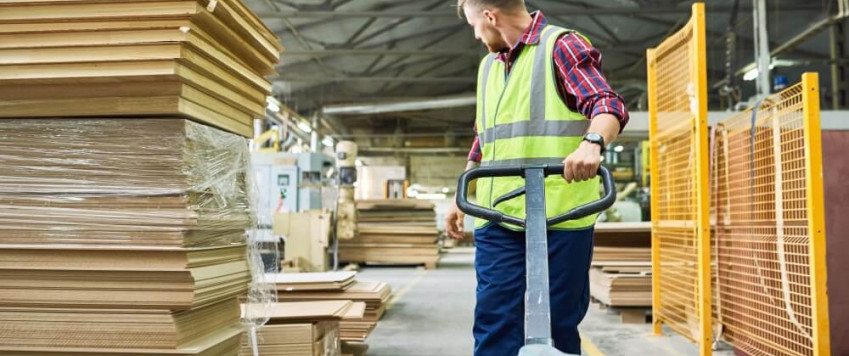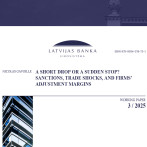Latvia reports surprising economic growth

While the third quarter saw our trade partner growth rates declining, the flash estimate of Latvia's economic development suggests an even faster growth than before. The construction sector is a traditional contributor; however, its performance in the third quarter clearly does not explain growth of the gross domestic product (GDP): it means that positive surprises were observed in services sectors.
According to the flash estimate of the Central Statistical Bureau (CSB), in the third quarter of 2018 Latvia's GDP grew by 1.8% quarter-on-quarter (at constant prices, seasonally adjusted data). Annual GDP growth rate stood at 5.5% according to the time series of calendar adjusted data. According to non-adjusted data, growth was more moderate at 4.8% on account of two additional holidays due to the Song and Dance Celebration and the Pope's visit.
The available sectoral information points to a persistently strong contribution by the construction sector. However, the annual growth rate of 10% is much lower than expected, suggesting a substantial decline in activity in quarterly terms.
Industry demonstrated rather weak overall development. In the last few months, manufacturing growth largely resulted from the successful performance of wood-processing industry. But although the high raw material prices stimulate logging and exports of wood, persistently high prices are a real challenge for further processing. The profitability of the manufacturers of lower value added products has already been notably affected. Drought across the whole region and repairs of the NordBalt cable supported higher energy prices that resulted in accelerated growth of electricity volumes generated in cogeneration in the third quarter. Overall, however, this could not offset the drought-driven fall in power volumes generated in hydroelectric power stations. Consequently, the quarter has obviously been less successful for the energy sector in comparison with the previous year when high sectoral output was observed due to heavy rain.
Retail trade has also seen rather moderate development in the third quarter. In July and August, its growth gradually declined, whereas in September it rebounded, mostly on account of retail sales of non-food goods in non-specialised stores. The improvement coincides with the first month of IKEA operation in Latvia, therefore the accelerated growth in this segment could mark a short-term effect, i.e. postponed consumption. Meanwhile, trade in several other goods, including automotive fuel, has slowed down, same as the trade in food products previously experiencing rapid growth.
The contribution of the transport sector was most likely positive, given the increases in cargo handling volumes at ports and rail freight, and the persistently good performance of the air passenger transport. Freight transportation by road might have negatively affected sectoral growth. The sector representatives are increasingly complaining about labour shortages.
Rapid GDP growth has obviously been underpinned by some of the large services sectors. The question is also open about the financial sector and the extent to which the cancellation of the ABLV Bank, AS licence will be reflected in statistics.
The currently available data suggest that GDP growth of Latvia's trade partners has moderated in the third quarter. The previous quarter was not successful for Lithuania: GDP dropped 0.4% over the previous quarter on account of the poor harvest. The euro area flash estimate also suggests slower growth than before (a 0.2% increase quarter-on-quarter, down from 0.4% in the second quarter). It was positively affected by a more rapid increase (0.4% quarter-on-quarter) in the French economy than in the first half of the year, registered on account of a rise in private consumption and improved exports indicators. The negative effect resulted from the Italian economy stagnating in the previous quarter (0.0% growth quarter-on-quarter) with s higher value added in agriculture and services offsetting the unsuccessful performance in industry.
A more accurate assessment of the results of the third quarter will be possible on 30 November when more detailed data on the updated GDP and its changes will be published.
Textual error
«… …»






